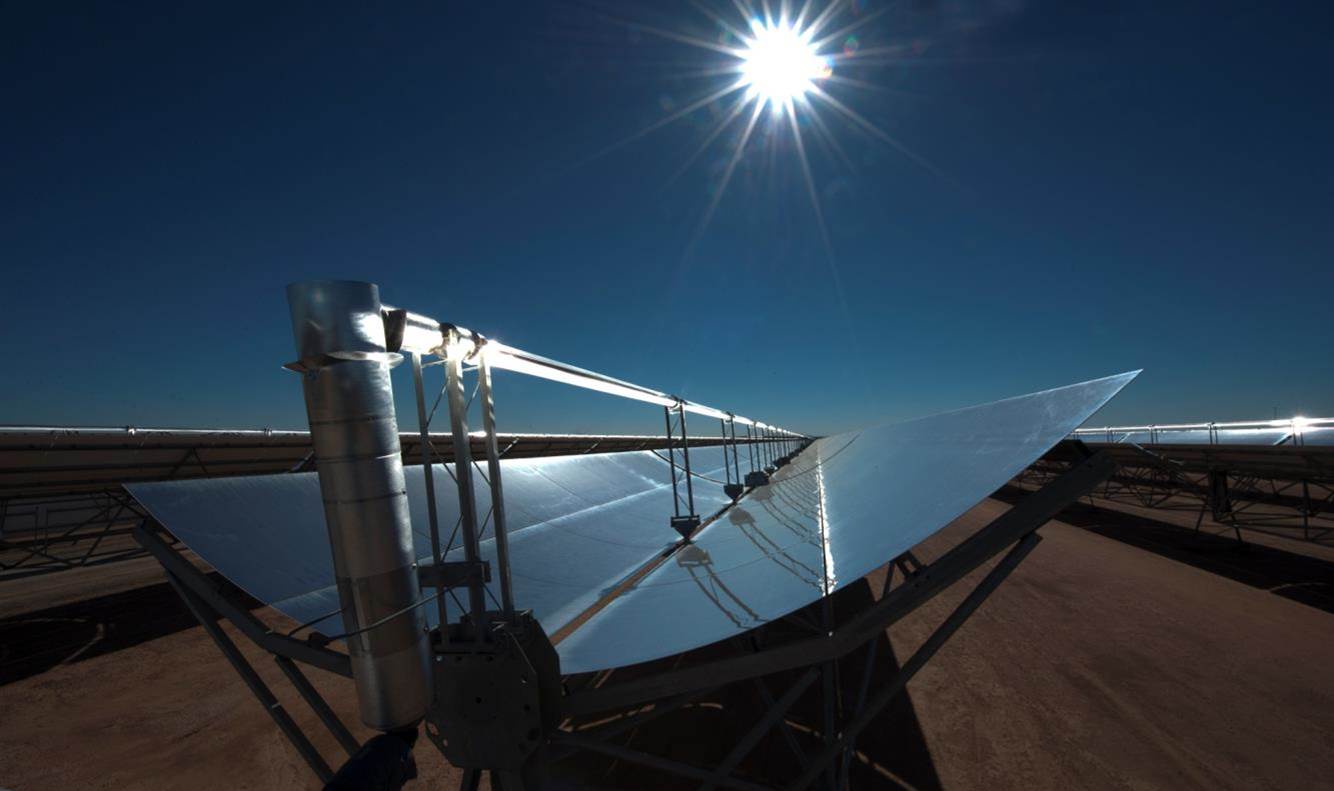This post is one in a series featuring the complete slate of advanced energy technologies outlined in the report This Is Advanced Energy.

Image: Solana Solar Platform, proprietary technology of Abengoa Solar, S.A.
Solar Thermal Electric (STE), often called concentrating solar power (CSP), uses mirrors or lenses to concentrate sunlight, generating temperatures high enough to produce steam and drive steam turbines. There are three configurations of STE systems in commercial use: power towers focus sunlight at a point, while parabolic troughs and Fresnel reflectors focus sunlight onto linear receiver tubes. Parabolic troughs and power towers are the most commonly used STE technologies today, and along with linear Fresnel configurations are deployed in large-scale projects that generally range in capacity from tens to hundreds of MW. STE plants can incorporate thermal energy storage, typically using molten salt, allowing them to generate electricity when it is needed even if the sun is not shining. A number of commercial and demonstration projects have also been built to integrate STE technology into natural gas and coal power plants, reducing the fuel inputs needed for the same energy output.
Large-scale STE projects were first installed in the United States starting in the 1980s, and deployments have accelerated in the past few years. Installed capacity of STE in the United States reached 1.7 GW by the end of 2014, nearly half of which (0.8 GW) was added in 2014 alone. STE is best suited to arid areas with strong solar resources, and there are projects installed or under development in Arizona, California, Florida, Hawaii, Nevada, and Utah. For example, the 280 MW dispatchable Solana STE project by Abengoa in Arizona uses a parabolic trough configuration and molten-salt thermal storage, producing enough electricity to power approximately 70,000 homes and providing up to 6 hours of storage. Utilities are also making use of STE at gas and coal units. At its Martin gas plant, Florida Power and Light (FPL) has an integrated trough solar field that can generate 70 MW of solar electricity, and Xcel’s Cameo project in Colorado uses a trough field alongside a coal-fueled steam turbine.
While STE is a proven technology, it is currently more expensive on an energy basis than other conventional and advanced energy technologies, but costs are expected to continue to drop as deployment ramps up. Adding thermal energy storage raises capital costs, but also increases a project’s firmness and flexibility, allowing the project to provide essential grid needs while also providing dispatchable energy that helps integrate variable renewable generation. STE plants can also be backed up with natural gas, biofuels, or even hydrogen to cover extended periods of cloudy weather. The flexibility of STE plants allows them to be designed either as a peaker or as a flexible baseload unit.
